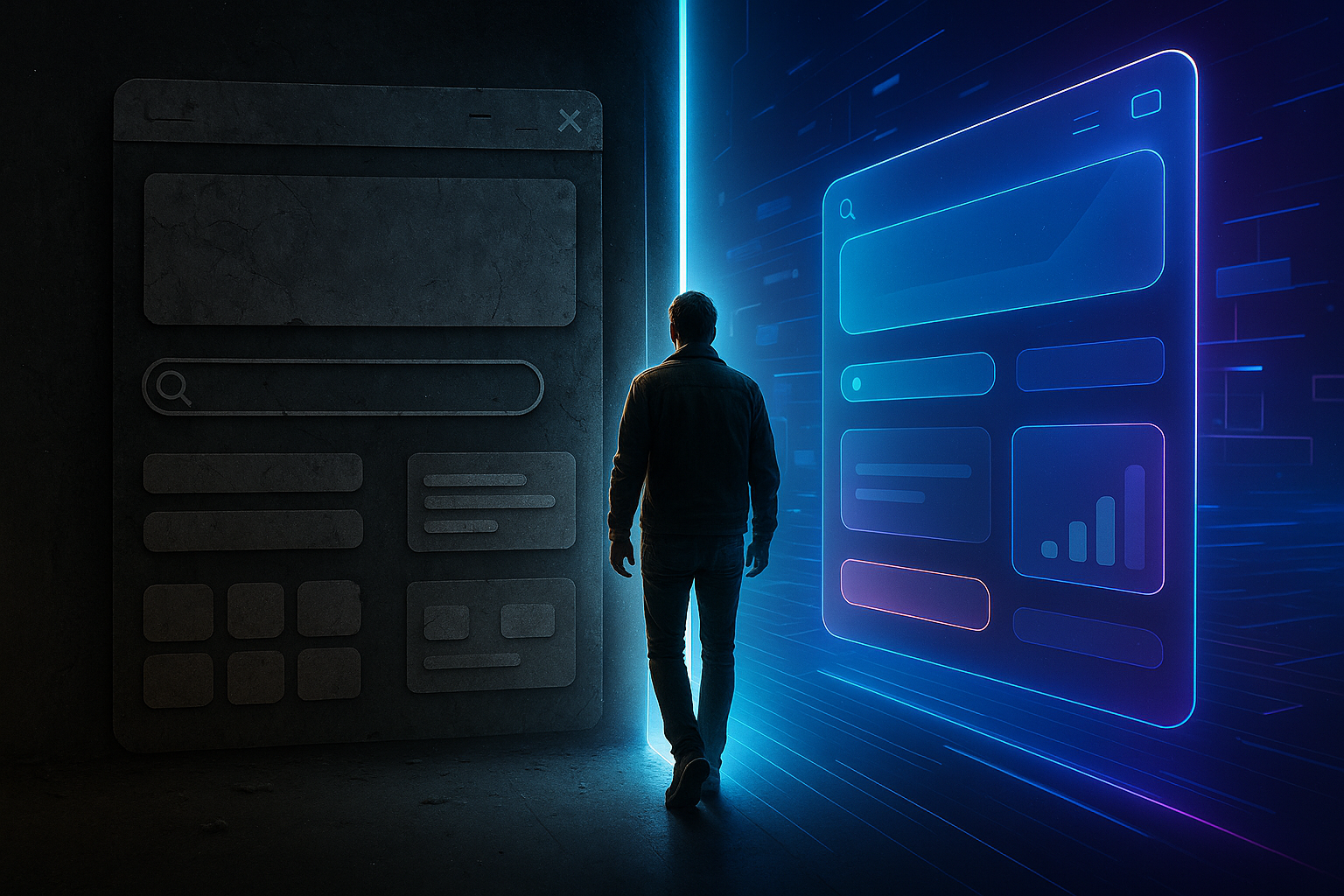
UI/UX Modernization: How to Prevent Losing Users
October 9, 2025 - 6 min readDon’t Let Your Interface Fall Behind: Retain Users with a Modern UI/UX
Why a Modern UI/UX Is No Longer a Luxury — It’s a Necessity
Users no longer settle for a system that just “works.”
They expect aesthetic, intuitive, and smooth experiences.
Your interface is the first point of contact between your product and your user. If that first impression feels outdated, confusing, or slow, the user might leave in seconds.
Most digital products grow over the years. New features are added, but UI/UX often remains untouched. That’s where interface modernization comes into play. And the goal isn’t just to make it “look better” — it’s to improve retention and satisfaction.
Risks of an Outdated Interface
User Loss
Cluttered, outdated, and non-responsive designs can drastically reduce the time users spend on your platform.
Weakened Brand Perception
Users often evaluate a brand's credibility based on design. An outdated UI might lead them to ask, “If they can’t update their interface, how will they take care of me?”
Technological Incompatibility
New browsers, mobile devices, and evolving user expectations may not be compatible with old systems. This leads to performance and security issues.
Benefits of a Modern UI/UX
Increased User Satisfaction
A modern interface addresses user needs faster and more intuitively.
Higher Conversion Rates
Well-designed UX directly impacts how effectively you convert visitors into customers.
SEO and Mobile Optimization
Responsive and accessible interfaces are rewarded by Google. Better rankings mean more organic traffic.
5 Key Areas to Focus on During UI/UX Modernization
1. User-Centered Design
Understanding user needs, behavior, and habits is at the core of modern design. UI decisions should be based on real insights.
2. Mobile Responsiveness
With the majority of users browsing on mobile, slow or clunky mobile UIs will get abandoned instantly.
3. Use of Design Systems
Consistency is key. Implementing UI kits, design tokens, and component-based structures helps maintain a cohesive feel and speeds up development.
4. Accessibility
Designing for all users — including those with visual, auditory, or motor impairments — is not only a responsibility but also a way to build an inclusive brand.
5. Openness to Feedback
User feedback loops allow iterative improvement. Platforms that evolve based on real feedback tend to perform better long term.
When Is UI/UX Modernization Necessary?
- If your website or software hasn’t had a design update in 3+ years
- If you're noticing declining user engagement or rising bounce rates
- If your mobile conversion rate is significantly lower than desktop
- If you're entering new markets
- If you're rebranding or updating your image
Even one of these signals could mean it’s time to modernize your UI/UX.
It’s Not Just Design — It’s About Experience
Remember: users don’t just want a “pretty” interface. They want an experience that is fast, intuitive, they want an experience that is consistent, reliable, and satisfying.
UI/UX design is no longer just about aesthetics — it’s a strategic advantage. It helps you stand out from competitors, retain users, and improve ROI.
Final Thoughts: Don’t Let Your Interface Fall Behind
Technology moves fast. Users move even faster. What looks outdated today can cost you growth opportunities tomorrow.
If you want to refresh your brand perception, improve user experience, and boost conversions — investing in UI/UX modernization is the smart move.
Frequently Asked Questions
How long does a UI/UX modernization project take?
Depending on the size of the project, it usually takes between 2 to 8 weeks. If you're implementing a full design system, it may take longer.
Is it just the design, or will development also be affected
Typically, yes — frontend technologies are updated alongside the interface. This also improves performance.
What tools are used?
Popular tools include Figma, Adobe XD, and Sketch for design, and component-based frontend frameworks like React, Vue, or Angular for implementation.